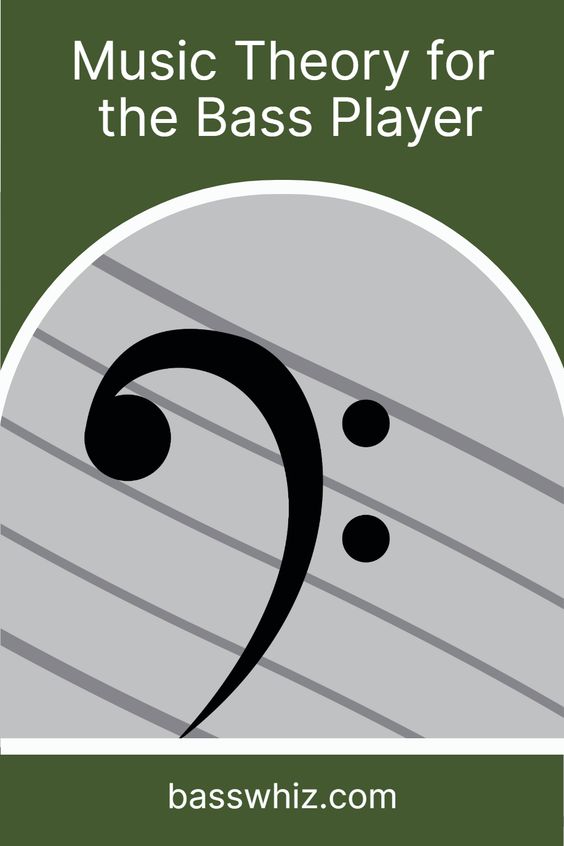Music Theory for the Bass Player: Unveiling the Mysteries
Intro to Music Theory for the Bass Player
Music theory is a critical component of becoming a great bass guitarist. Not only does it help you understand the language of music, but it also helps you develop your ear for improvisation and harmonizing with other musicians. In this blog post, we’ll delve into the essential role of the bass guitar in music, the language of music notation, the building blocks of music (scales and modes), rhythm and timing, harmonizing with chord progressions, and developing your ear for improvisation.
The Essential Role of the Bass Guitar in Music
As a bass guitarist, you might sometimes feel like you’re in the shadows, but let me tell you – you’re the backbone of the band! Without you, the music would be flat and lifeless. Your instrument provides the foundation for the entire band, setting the rhythm and guiding the harmony. You’re the one who keeps the drummer in check, and you create the perfect complement to the lead guitar or vocals.
But being the foundation of the music doesn’t mean you can’t shine on your own. In fact, the bass guitar is capable of some of the most intricate and impressive musical performances out there. It’s a versatile instrument that can play everything from complex jazz lines to punchy, upbeat rock riffs. And, since the bass guitar covers a wide frequency range, it can add depth and richness to the overall sound of the music.
So, don’t underestimate the power of the bass guitar! Whether you’re laying down a simple, steady groove or performing a show-stopping solo, you’re an essential part of the music. Keep practicing, keep learning, and keep making that bass guitar sing. Who knows? You might just inspire the next generation of bass guitarists to come.
Understanding the Language of Music Notation
Ready to dive into the nitty-gritty of music theory? First up on the list: understanding the language of music notation. While it might seem daunting at first, learning to read music notation is an essential part of becoming a great bass guitarist. Don’t worry though, with a bit of practice and patience, you’ll be able to read sheet music like a pro in no time.
So, what exactly does music notation include? Well, it covers everything from note values and time signatures to rests and dynamics. As a bass guitarist, it’s important to be able to identify different types of musical notation, including standard notation, tablature, and chord charts. Each of these types of notation is used to convey different types of information, so it’s important to understand the nuances of each.
For example, standard notation is used to convey the pitch and rhythm of each note, while tablature is used to show where to place your fingers on the fretboard. Chord charts, on the other hand, show the chords used in a song and provide a basic framework for the bass line.
While it might take some time to get used to reading music notation, the benefits are well worth the effort. Not only will it help you communicate with other musicians more effectively, but it will also allow you to play a wider variety of music. So, grab your music stand and start practicing those notes – you’ll be reading sheet music like a pro in no time!
The Building Blocks of Music: Scales and Modes
If you want to create dynamic bass lines that really stand out, you need to master scales and modes. These fundamental building blocks of music theory give you the tools you need to create memorable bass lines that complement the melody and add depth to the overall sound of the music.
The major and minor scales are the foundation of most Western music, and as a bass guitarist, you’ll need to know them like the back of your hand. These scales are made up of a series of whole and half steps, and they provide the basis for chord progressions and melodies.
In addition to major and minor scales, there are also pentatonic and blues scales, which are commonly used in rock and blues music. These scales can add a bit of edge to your bass lines and give your playing a distinctive sound.
Modes are another important concept in music theory. Essentially, modes are different variations of the major scale, each with its own unique character and sound. By learning to play in different modes, you can create more complex and interesting bass lines that really showcase your skills as a musician.
Overall, mastering scales and modes is a key part of becoming a great bass guitarist. By developing your understanding of these building blocks of music theory, you’ll be able to create bass lines that are both technically impressive and emotionally resonant. So, grab your bass guitar and start practicing those scales – your future as a great bassist is waiting!

The Heartbeat of Music: Rhythm and Timing
As a bass guitarist, you are the heartbeat of the band, keeping everyone in sync and grooving to the rhythm. Perfect timing and rhythm are crucial to making sure the music flows smoothly and keeps the audience moving. But how do you develop impeccable timing? It starts with practicing different types of rhythms, including quarter notes, eighth notes, and sixteenth notes.
But timing isn’t just about playing the right notes at the right time. It’s also about feel and groove. You need to be able to lock in with the drummer and create a solid foundation for the rest of the band. This means paying close attention to the beat and understanding how to accentuate certain notes to create interesting and dynamic rhythms.
Make It More Interesting
To really take your rhythm and timing to the next level, try experimenting with different time signatures. You might be used to playing in 4/4 time, but what about 3/4 or 6/8? These different time signatures can add a new level of complexity to your playing and help you stand out as a bassist.
Finally, don’t forget about the importance of silence and rests in creating a dynamic rhythm. Knowing when to play and when to hold back is just as important as playing the right notes. So, keep practicing those rhythms, pay close attention to the groove, and get ready to be the heartbeat of the band like never before!
Harmonizing with Chord Progressions used in Music Theory for the Bass Player
Now that we’ve covered the basics of music theory for bass guitarists, let’s move on to one of the most important skills you’ll need to master: harmonizing with chord progressions. Whether you’re playing in a band or jamming with friends, understanding how to harmonize with chord progressions is essential for creating cohesive and dynamic music.
So, what exactly is a chord progression? Simply put, a chord progression is a series of chords played in a specific order. Chord progressions provide the framework for a song, and as a bassist, you’ll need to know how to identify and play along with them.
One important concept to understand when harmonizing with chord progressions is chord inversions. Chord inversions refer to the different ways that chords can be played, depending on which note is in the bass. For example, a C major chord can be played with a C in the bass, an E in the bass, or a G in the bass. Understanding chord inversions is key to creating interesting and dynamic bass lines that complement the melody and harmonize with the chord progression.
This Can Really Help
Another technique to master is playing arpeggios. An arpeggio is simply a chord played one note at a time, and it can be a great way to add some complexity and depth to your bass lines. You’ll also want to experiment with different chord voicings, which refer to the different ways that chords can be played across multiple strings and frets.
Overall, harmonizing with chord progressions is an essential skill for any bass guitarist. By understanding chord inversions, playing arpeggios, and experimenting with chord voicings, you’ll be able to create bass lines that perfectly complement the melody and create a cohesive and dynamic musical experience. So, grab your bass guitar and start exploring the world of chord progressions!

What is the Circle of Fifths?
The Circle of Fifths is a visual representation of all the musical keys, depicted in a circular layout where each key is a fifth interval apart from its neighbors. Moving clockwise on the circle increases each key by a fifth (e.g., C to G), and each key signature gains one sharp. Moving counterclockwise decreases each key by a fifth (e.g., C to F), and each key signature gains one flat.
Why It’s Useful for Bass Guitarists
- Understanding Key Signatures: The circle helps bass players quickly identify which sharps or flats are in a given key. This is essential for knowing which notes to emphasize and avoid during basslines and solos.
- Improvisation and Composition: By knowing the key you are playing in, you can make informed decisions about which notes will sound harmonious. The circle also helps in transitioning smoothly between keys, a common technique in jazz and progressive music genres.
- Scale Construction: The circle is a great way to learn and visualize how scales are constructed. For instance, starting at any point on the circle and moving clockwise or counterclockwise can help you build major scales based on the number of sharps or flats.
- Chord Progressions: Many common chord progressions follow the pattern of the circle. For example, moving from a C major chord to a G major chord (a fifth above C) is a very common progression. Understanding this can help bass players develop bass lines that effectively support harmonic movement.
How to Apply It on the Bass Guitar
- Practice Scales: Use the circle as a guide to practice scales in different keys. Start with C major (no sharps or flats) and play the scale on your bass. Then move to G major (one sharp), and so on, following the circle.
- Learn Chord Tones: For each key in the circle, practice playing the root, third, and fifth of the chords. These are crucial for creating bass lines that are melodically and harmonically supportive.
- Memorize Patterns: The physical layout of a bass guitar fretboard makes it easy to visualize patterns. For instance, moving from one note to the fifth is often a movement of one string down and two frets up.
- Transposing: When you need to play a piece in a different key, the Circle of Fifths makes it easier to transpose the parts. You can see how many steps you need to move around the circle to reach the new key and adjust your playing accordingly.
By integrating the Circle of Fifths into your practice and playing, you can deepen your understanding of music theory and improve your versatility and effectiveness as a bass guitarist. This tool is not just theoretical but extremely practical for everyday use, whether you’re jamming, performing, or composing.
Developing Your Ear for Improvisation
Improvisation is a skill that separates the great bass guitarists from the rest. Developing your ear for improvisation means you can create unique and interesting bass lines on the fly, which can add a new level of excitement to your performances. It’s not just about playing the right notes, but also about playing them in the right way at the right time. So, how do you develop your ear for improvisation?
One way is to practice playing along with different types of music. By listening closely to the melody and rhythm of a song, you can start to identify the key and the chords being played. This will help you develop your understanding of harmony and chord progressions, which is essential for improvisation.
Change It Up!
Another way to develop your ear for improvisation is to experiment with different scales and modes. By playing around with different notes and intervals, you can create bass lines that are both technically impressive and emotionally resonant. You’ll also want to experiment with different rhythms and tempos, which can add a new level of complexity to your playing.
Finally, don’t forget about the importance of listening to other musicians. By paying close attention to what the drummer, guitarist, or vocalist is playing, you can start to anticipate their movements and create bass lines that complement their playing. Improvisation is all about collaboration and communication, so make sure to listen and communicate with your bandmates.
Overall, developing your ear for improvisation takes time and practice, but it’s an essential skill for any bass guitarist. By playing along with different types of music, experimenting with different scales and modes, and listening to your bandmates, you’ll be able to create bass lines that are both technically impressive and emotionally resonant. So, grab your bass guitar and start improvising – the possibilities are endless!
FAQs
What’s the best way to start learning music theory for bass?
Start with the basics: learn to read music, understand scales, and practice simple chord progressions.
How important is it to learn to read music?
While not absolutely necessary, reading music opens up a world of resources and makes learning new material much easier.
Can I learn to play bass without a teacher?
Yes, with dedication and the right resources, you can teach yourself. However, a teacher can provide personalized guidance and help you progress faster.
How often should I practice bass?
Regular practice is key. Aim for at least 30 minutes a day, but more importantly, make sure your practice is focused and effective.
Do I need expensive gear to be a good bass player?
Not necessarily. While good gear can enhance your sound, skill and practice are far more important.





